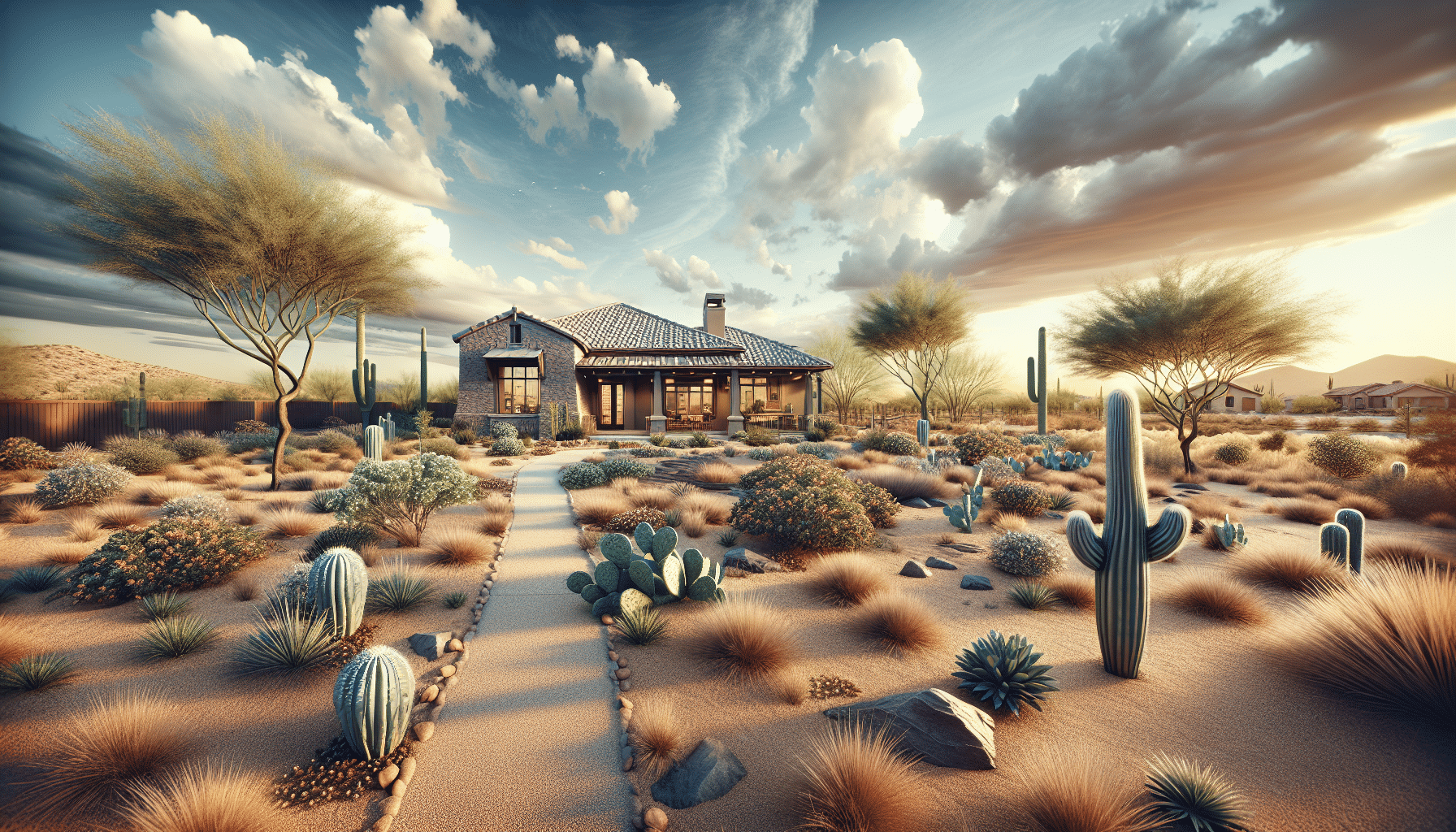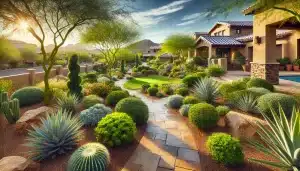At Red Mountain Landscaping, we understand that desert landscapes can be challenging, especially when aiming for beauty and sustainability. This article is here to help homeowners transform their arid surroundings into picturesque paradises. We’ll guide you through the essential tips and tricks to make desert landscaping a breeze.
Contents
Selecting the Right Desert Plants
Choosing the right plants is the foundation of your desert landscaping journey. Not all plants thrive in arid environments, so it’s vital to pick species that are well-suited to the climate.
For starters, succulents and cacti are excellent choices because they store water in their leaves and stems. These hardy plants can survive long periods without water, making them perfect for desert conditions. Besides, their unique shapes and vibrant colors add a distinct flair to your garden.
Watering Wisely
Water is a precious resource in desert areas, which is why efficient watering methods are crucial. The goal is to maximize absorption and minimize waste.
We recommend using drip Irrigation Systems. These systems deliver water directly to the plant roots, reducing evaporation and ensuring that the plants get the moisture they need. Morning or evening watering is ideal because it prevents water loss due to the midday heat.
Incorporating Hardscape Elements
Desert landscaping isn’t only about plants; it’s also about hardscapes, such as rocks, pathways, and patios. These elements can add texture and visual interest to your garden.
Consider using decomposed granite for pathways. It’s durable, has excellent drainage properties, and gives a natural look to your garden. Additionally, strategically placing boulders and stones can create stunning focal points that break the monotony of the landscape.
Using Mulch for Moisture Retention
Mulch is an unsung hero in desert landscaping. It helps keep the soil cool, retains moisture, and reduces weed growth, thereby lessening the gardening workload.
- Organic mulch: Made from plant materials like bark or wood chips, organic mulch decomposes over time, adding nutrients to your soil.
- Inorganic mulch: Options like gravel or stones last longer and don’t attract pests, making them ideal for desert climates.
Creating Shade and Shelter
Shading isn’t just for your comfort; it’s also crucial for your plants. Some plants may need protection from the intense sun, especially during the hottest part of the day.
You can create shade using pergolas, arbors, or even shade cloths. Planting trees or shrubs that provide natural shade can also be effective. Just be sure to choose native species that are adapted to the local climate.
Designing with Color and Texture
One might think that a desert landscape is devoid of color, but that’s far from the truth. Desert plants can offer an array of vibrant hues and interesting textures to enliven your garden.
Consider using a variety of cacti and succulents that produce bright flowers. Incorporate plants like agave and yucca for their striking architectural forms. The key is to balance color and texture to create a visually pleasing space.
Proper Maintenance Practices
Once your desert landscape is in place, maintaining it through proper practices is essential. The good news is that desert gardens are generally low-maintenance.
- Regular pruning: Keep your plants healthy and well-shaped by removing dead or overgrown branches.
- Weeding: Regularly check for and remove any weeds to prevent them from competing with your plants for nutrients.
- Mulch replenishment: Add new mulch as needed to continue reaping its benefits.
Utilizing Native Plants
One of the best strategies for a thriving desert landscape is to use native plants. These plants are well-adapted to the local climate and soil, requiring less water and maintenance.
Some popular native plants include desert marigold, brittlebush, and palo verde. Not only do they conserve water, but they also support local wildlife, contributing to the ecosystem’s health.
Environmental Benefits
Desert landscaping isn’t only beneficial for your home; it’s also eco-friendly. By choosing drought-resistant plants and efficient watering methods, you conserve water, which is crucial in arid regions.
Moreover, incorporating native plants helps support local wildlife and reduces the need for chemical fertilizers and pesticides. In doing so, you create a sustainable and environmentally responsible garden.
Ready to transform your desert landscape into a stunning oasis? Contact Us at Red Mountain Landscaping by phone # 480-373-9312 or Request a Free Quote today!




